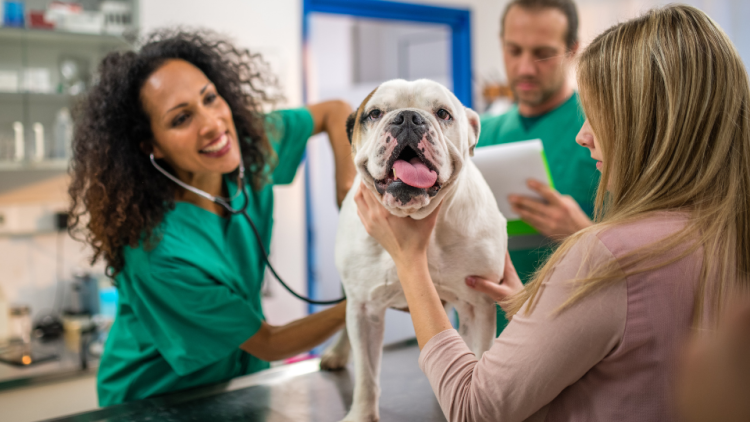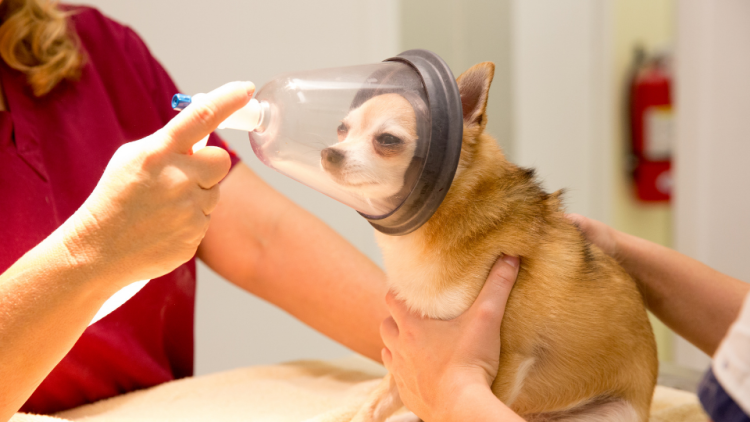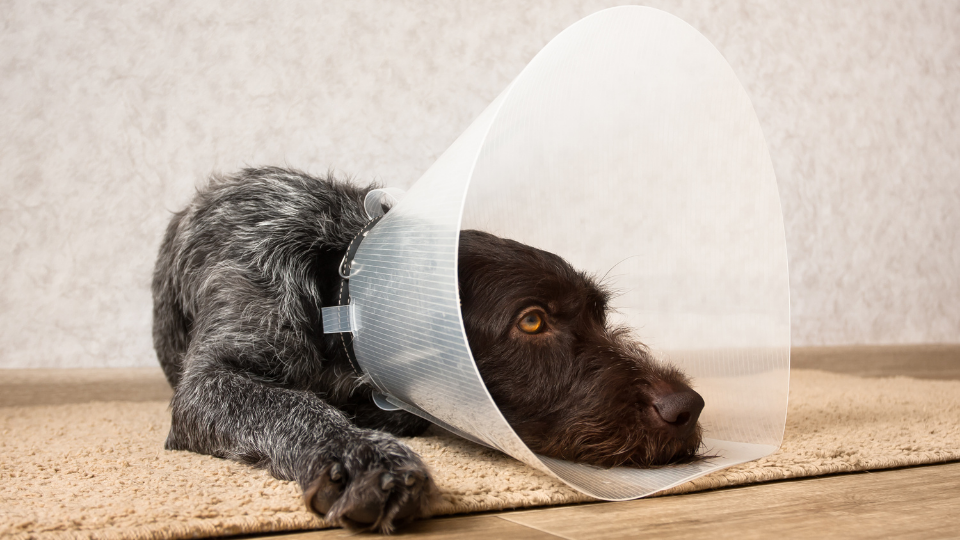As a pet owner and veterinarian, I understand how scary it can be to think about your dog under anesthesia.
Most dogs will need to be anesthetized a few times during their life, first for their spay or neuter surgery, and later for dental cleanings to prevent or address periodontal disease. Some pets may need additional anesthesia for elective procedures (such as removal of a lump or orthopedic surgery) or emergency procedures (such as removal of a foreign object, bleeding abdominal tumor, or bloat).
If your veterinarian has recommended an anesthetic procedure for the sake of your pet’s health and comfort, read on to learn more. I'll go over what to expect before, during, and after dog anesthesia with tips on how to give your pet the best possible care.
Here's everything you need to know about dogs and anesthesia:
- Myths and misconceptions about anesthesia for dogs
- Is anesthesia safe for dogs?
- How to prepare your dog for anesthesia
- How much does dog anesthesia cost?
- Key Takeaways
Myths and misconceptions about anesthesia for dogs
Age
One of the most common reasons I hear as to why an owner doesn’t want their dog under anesthesia is because they worry that their pet is too old. Many of the patients for which I recommend anesthetic procedures most commonly are older, as they have higher rates of dental disease or are more likely to develop lumps on or under their skin.
Ultimately, age alone is not a reason to avoid anesthesia. As many veterinarians say, “age is not a disease.” There are age-related considerations for anesthesia, such as the increased incidence of heart disease and organ dysfunction in older pets, but these can be investigated with preoperative testing.
Breed
Another common concern held by some pet owners relates to beliefs of breed-specific drug sensitivities. There are many myths that certain breeds of dogs and cats cannot tolerate anesthetic medications. Many of these are truly myths and not backed by scientific evidence. However, some breeds are more prone to certain diseases that should be screened for prior to anesthesia.
Regardless of age or breed, your veterinarian will discuss your pet’s individual risk level and recommendations for preoperative testing to ensure that your pet is a good anesthetic candidate.
Is anesthesia safe for dogs?
Anesthesia is never risk-free, but the drugs and monitoring equipment available at most veterinary hospitals have been developed and selected to minimize risk, which includes a decrease in vital signs such as body temperature, heart rate, blood pressure, and respiration. All of these are monitored before, during, and after the procedure. Veterinary teams will support the body through the administration of intravenous fluids and heat support throughout the procedure and in recovery.
The risk of death from anesthesia in healthy pets is extremely low. According to the 2020 Anesthesia Guidelines published by the American Animal Hospital Association, the risk of death from anesthesia in a healthy dog is less than 0.05%. Part of the reason why this risk is so low is that veterinarians carefully select the patients they anesthetize and screen them for hidden disease through preoperative testing.
Preoperative Testing Before Dog Anesthesia
Your veterinarian will discuss how to minimize the risks of anesthesia for your pet through preoperative testing. Many tests can be performed on the day of your pet’s anesthetic procedure, but some are more specialized and need to be sent to an outside laboratory. Sometimes, the results of the test may alter the anesthetic plan or result in your veterinarian determining that it is not safe to anesthetize or that your pet should see a specialist.
Recommendations will vary depending on your pet’s age, breed, and other health conditions. They may include:
- Bloodwork to assess your pet’s organ function (i.e., kidneys and liver), red blood cells, white blood cells, and platelets. Blood tests help your veterinarian detect hidden health issues that could potentially make anesthesia life-threatening for your dog.
- Electrocardiogram to assess the electrical rhythm of your pet’s heart and check for abnormalities, or arrhythmias to ensure there is no pre-existing pathology that may increase the risk of adverse reaction for a dog under anesthesia.
- Radiographs (x-rays) may be recommended to assess your pet’s chest, abdomen, or bones. These are especially helpful if your pet has a heart murmur, there is a concern for cancerous spread to the lungs (metastatic disease), or your pet is having an orthopedic procedure.
- Clotting tests are recommended in some situations and breeds (such as the Doberman Pinscher, which is genetically predisposed to Von Willebrand’s Disease) if there is a concern that your dog or cat’s blood may not clot normally, which can lead to excessive bleeding during surgery.
If your pet is undergoing a planned, elective procedure, testing can be performed prior to the day of anesthesia. For emergency surgical procedures, all testing will need to be performed the same day.

How to prepare your dog for anesthesia
24-Hours Before Dog Anesthesia
Preparing for dog anesthesia starts at home. You can help your pet have a safe anesthesthetic experience by following all of the instructions provided by your veterinarian. Instructions will include directions for:
- Fasting. Your veterinarian will tell you when to remove food from your pet. This is often the night before the scheduled procedure. Pets with food in their stomach are more likely to vomit while under anesthesia. This increases the risk of complications such as aspiration.
- Removal of Water. While your pet's stomach should be empty before anesthesia, water usually only needs to be removed for a few hours. This will help to keep your pet from being dehydrated prior to surgery.
- Medication. If your pet is on prescription medication, your veterinarian will let you know if you should still give the medication on the day of anesthesia. Make sure that your vet is aware of any over-the-counter medications and supplements your pet is receiving as well. Some medications can interact with anesthetic medications and should not be given close to an anesthetic procedure.
- Preoperative Sedation. If your pet is especially aggressive or anxious when going to the vet, pre-visit sedation may be recommended. These medications can be used even if your pet is going to have anesthesia. Minimizing stress is important to maximize safety for your pet and the veterinary staff on the day of your pet's procedure.
If your pet has a long-term medical condition, like diabetes, make sure that you review the preoperative instructions carefully as they may differ from standard recommendations. Do not hesitate to call your veterinary office if you have any questions.
On The Day Of Your Dog's Anesthetic Procedure
Your veterinary clinic will have a designated drop-off time for patients undergoing anesthesia. During this time, veterinary nurses will review your pet's medical history and any information specific to his or her procedure. Make sure to let your pet's veterinary team know of anything that has changed since your last visit (i.e., change in appetite, diarrhea, vomiting, decreased energy, or behavior changes).
At some clinics, your pet’s procedure may not be performed until several hours after drop-off. While it may make you nervous to have your pet waiting at the vet office, arriving before their procedure allows the vet team to prepare medications, run preoperative tests and start any pre-anesthetic treatments that are needed.
For most anesthetic procedures, your pet will have an IV catheter placed. This allows the veterinary team to deliver drugs and fluids directly into your pet's bloodstream without having to stick needles through his or her skin multiple times. Having an IV catheter is a very important part of making anesthesia safe, especially if a complication occurs.
Your dog will likely receive a combination of injectable medications for sedation and pain relief as well as gas anesthesia, which is usually delivered through an endotracheal tube (or E-tube). They will also receive oxygen during the procedure.
A trained veterinary staff member will monitore your pet before, during, and after the procedure to ensure they tolerate the medication well and recover safely.

Planning For Dog Anesthesia Recovery
It is very normal for your pet to still be a bit groggy after they are released from the hospital. Most routine procedures are outpatient procedures where your pet will be sent home after they are alert, comfortable, and mobile.
Some anesthetics can last in a dog's system for up to 12 or even 24 hours. Your pet may whine, act confused, or be a bit unsteady on their feet with difficulty walking after anesthesia. Sometimes, a pet’s normal behavior will be different, so they should always be supervised around children or other pets after surgery.
It is normal for your pet not to have a bowel movement for a couple of days after an anesthetic procedure. Anesthetic drugs can slow down your pet’s gastrointestinal tract, which will already be slowed by the preoperative fasting period.
Your pet should be fully recovered from the effects of anesthesia within a day or two of surgery. However, surgical recovery will take longer, so be sure to follow all post-op instructions for exercise restriction, incision care, pain medication, and wearing an e-collar.
If you have any concerns with your pet's recovery, call your primary veterinarian to discuss your pet. If your regular vet is closed, an after-hours or emergency veterinary hospital can help answer questions you may have.
How much does dog anesthesia cost?
The cost of anesthesia for dogs can fall anywhere between $90 and $1,200 depending on your pet's size and health condition, as well as the type of procedure they undergo. Some vets charge by the hour or half-hour, whereas other procedures are priced by weight because larger dogs need a larger dose of sedative drugs. High-risk patients that may require veterinary specialists on standby also cost more to aestheticize, as are dogs who undergo emergency surgery at an animal hospital.
Your veterinarian will provide an estimate of the expected costs for the procedure ahead of time along with the anesthetic consent form and care protocols.
Pet insurance can help to cover the costs of some procedures, including anesthesia, preoperative testing, and postoperative care. However, pet insurance will not cover pre-existing conditions, so you’ll want to make sure that you enroll in a policy while your dog is young and healthy, long before he or she might need anesthesia.
Key Takeaways
- Thinking about putting your pet under anesthesia can be scary, but veterinary teams do everything possible to minimize risk.
- Older pets can safely be anesthetized with appropriate preoperative screening.
- Preoperative testing may include bloodwork, an ECG, clotting evaluation, and radiographs.
- Safe anesthesia starts before your pet ever arrives at the veterinary clinic so follow all instructions carefully.
- Pet insurance can help to offset the costs of anesthesia, preoperative testing, and treatment of any complications that may occur.
